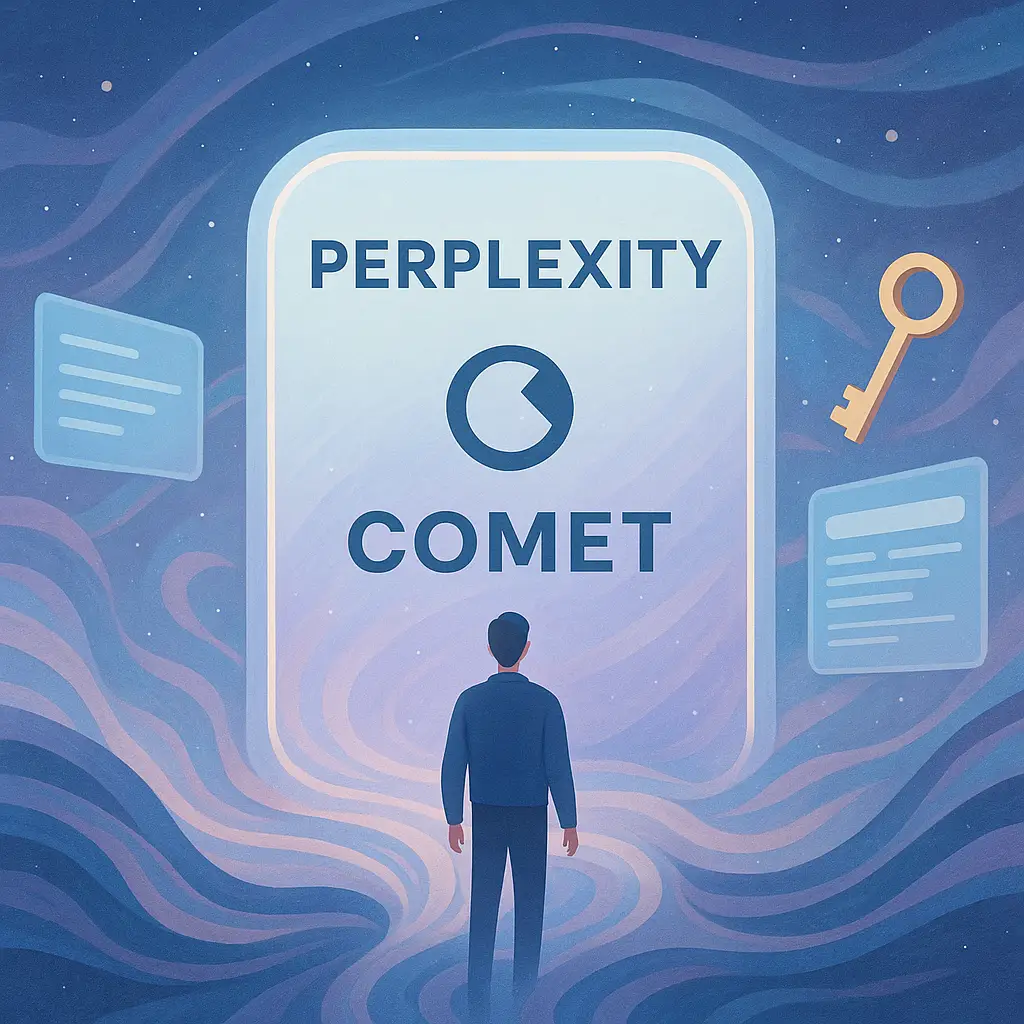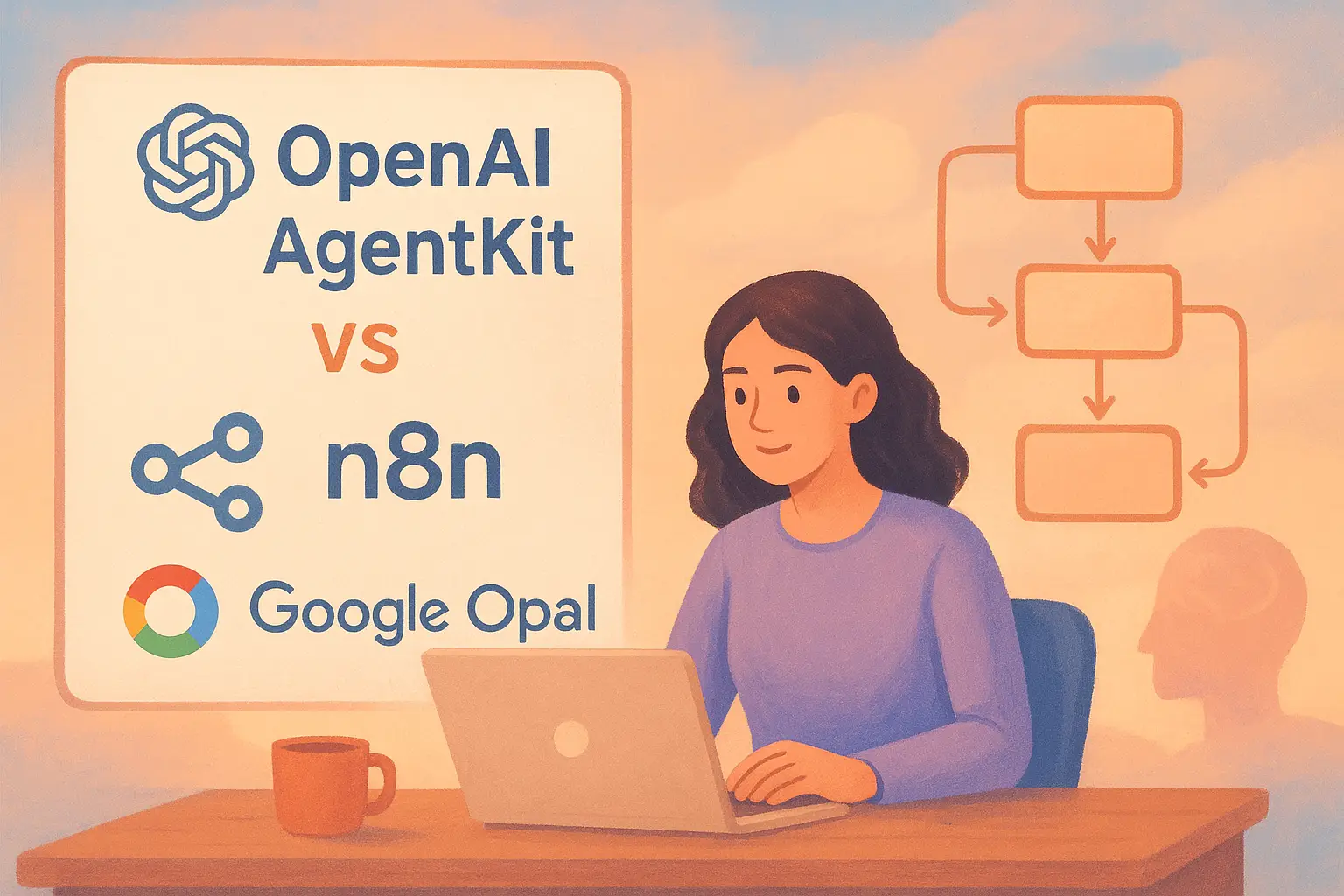
Auto LinkedIn Posts from AI X via n8n
Table of Contents
- Introduction
- Understanding n8n and Workflow Automation
- How the Automation Works: Step-by-Step
- Detailed Components and Integration
- Benefits of Automating LinkedIn Posts
- Hands-on Setup and Best Practices
- Comparison: Automated vs Manual Processes
- Troubleshooting Common Issues
- Future Enhancements and Roadmap
- Conclusion
- Frequently Asked Questions (FAQs)
Introduction
Keeping your LinkedIn profile vibrant and engaging is a must in today’s digital arena. But spending hours every day to curate, edit, and post content manually can become overwhelming. Imagine if you could automate the process, so you never have to worry about missing a post or losing engagement opportunities. This article explores how to leverage a smart, AI-powered workflow using n8n, a popular automation tool, to automatically transform trending AI content from X into professional LinkedIn posts.
In this guide, we’ll walk through a detailed, step-by-step process based on a workflow that fetches high-quality AI content from X, refines it with GPT-4, logs everything in Google Sheets, and finally schedules the post on LinkedIn. Throughout the article, you’ll find helpful links to resources like the n8n official website, OpenAI’s GPT-4 documentation, and others that ensure you have all the necessary context.
For those interested in seeing this workflow in action, I recommend checking out a similar workflow available on n8n's workflow library. It's an excellent resource that subtly demonstrates the potential of automation for social media management. You can find it here: Automate LinkedIn Content from Trending AI Posts.
Automate with n8n
Build workflows that save time and scale your work. Start free. Grow as you go.
Start Free with n8nUnderstanding n8n and Workflow Automation
At its core, n8n is a free and open-source platform that enables you to build custom workflow automations. It’s designed to seamlessly connect various services using a user-friendly drag-and-drop interface.
What is n8n?
n8n is a workflow automation tool that provides a visual interface to connect and integrate web services such as Google Sheets, LinkedIn, and AI processing tools like GPT-4. Some of its key features include:
- Visual Workflow Builder: Easily drag and drop nodes to form complex workflows without heavy coding.
- Extensive Integration Library: Compatible with hundreds of services including social media platforms, cloud services, and productivity tools.
- Custom Code Support: While it offers a no-code approach, you can incorporate JavaScript or custom scripts to extend functionality.
- Self-Hosting Options: Allows you to deploy on your own servers for enhanced security and control over your data.
For more details, visit the n8n documentation.
Why Embrace Workflow Automation?
Workflow automation brings many benefits. Consider these advantages:
- Time Efficiency: Automation handles repetitive tasks so you can focus on strategy and creative planning.
- Consistency: With a set schedule, content is posted daily without the variability of manual uploads.
- Error Reduction: Automation minimizes human errors like duplicate posts or missed schedules.
- Scalability: Easily adjust and expand the workflow to cover additional platforms as your business grows.
By building this workflow, you’re not just saving time – you’re ensuring that your LinkedIn audience receives fresh, high-quality content reliably every day.
How the Automation Works: Step-by-Step
Let’s dig into the detailed process of how the workflow automates the creation and posting of content.
-
Daily Trigger:
The workflow begins with a scheduled trigger (using a “Cron” node in n8n) that initiates the process at a specific time each day. This means you can set it and virtually forget it. -
Fetching AI Content from X:
Using the X API (formerly known as Twitter API), the system scans for trending posts tagged with relevant keywords such as "#AI" or "#ArtificialIntelligence." Essential data like text, images, and URLs are collected. You can explore the X API documentation for more information. -
Enhancing Content with GPT-4:
The raw post data is then passed through OpenAI’s GPT-4 which refines the language, ensuring that the content is not only relevant but also professionally appealing for your LinkedIn audience. Detailed information on this model is available at OpenAI’s GPT-4 docs. -
Logging in Google Sheets:
To keep track and avoid duplicate posts, the refined content is logged into a Google Sheets document. This acts as both a backup and a historical record. Refer to the Google Sheets API for integration details. -
Manual Approval via Telegram:
Before posting, the content is sent to your Telegram account for a quick manual review. This ensures every post aligns with your brand voice. For Telegram integration, you can check Telegram's Bot API. -
Scheduling and Posting on LinkedIn:
Once approved, the workflow schedules the post using the LinkedIn API at the optimal time to maximize engagement. If you’d like to dive into the LinkedIn API docs, now is a great time to do so.
Using this systematic approach, each element of your posting process is automated, combining the strengths of AI with reliable, real-time data logging and manual oversight.
Detailed Components and Integration
The robustness of the workflow lies in its components and integrations, each working in unison for smooth automation.
Key Integration Components
| Component | Function | Details & Helpful Links |
|---|---|---|
| X API | Fetches trending posts on AI topics | X API Documentation |
| GPT-4 | Processes and refines content for LinkedIn | OpenAI GPT-4 Documentation |
| Google Sheets | Logs processed posts and checks for duplicates | Google Sheets API |
| LinkedIn API | Schedules and posts content on LinkedIn | LinkedIn API Docs |
| Telegram | Notifies for manual approval before posting | Telegram Bot API |
| RapidAPI | Serves as a bridge to access the X API efficiently | RapidAPI |
Data Flow Diagram
Consider the following data flow:
- Trigger: A scheduled daily event starts the workflow.
- X API Call: Fetching of trending AI posts occurs.
- Content Processing: GPT-4 enhances the content.
- Data Logging: Google Sheets logs the refined content while checking for duplicates.
- Approval Process: Telegram sends a notification for manual review.
- Final Post: LinkedIn’s API schedules and posts the content.
This smooth data flow ensures that each part of the process is executed efficiently while still incorporating necessary human oversight.
Integration Details
-
X API Integration:
Proper configuration of the API endpoint and your API key ensures you capture the most relevant posts. Adjust filters as needed to ensure you're discarding general content and capturing truly trending AI posts. -
GPT-4 Processing:
The transformation of raw text into polished and engaging LinkedIn content is made possible by GPT-4. Adjusting parameters within this node can help tailor the output tone to perfectly fit your LinkedIn audience. -
Google Sheets Logging:
Every time a post is processed, it’s recorded in a Google Sheets document. This helps avoid duplicate posts and serves as a valuable resource for tracking your content history over time. -
Telegram for Oversight:
Automated notifications via Telegram ensure that you have the final say. This oversight prevents any missteps and guarantees that each post meets your quality standards. -
LinkedIn Posting:
The final step, using the LinkedIn API, takes your approved content and schedules it for optimal viewing times. This helps maximize engagement from your professional network.
Notably, if you’d like to see a live example of how such a workflow functions, consider exploring this workflow example on n8n’s library: Automate LinkedIn Content from Trending AI Posts. It provides an excellent reference point for setting up your own automation.
Benefits of Automating LinkedIn Posts
Implementing automation using a workflow like this offers several attractive benefits.
Time Savings
-
Rapid Content Generation:
Transforming hours of manual work into an automated process saves you countless hours. The daily trigger and automated processing let you focus more on strategy than on manual posting. -
Efficiency:
Once set up, the workflow runs with minimal intervention while maintaining a steady output of polished posts.
Enhanced Content Quality
-
Professional Polish:
GPT-4’s transformation capabilities guarantee that every post is well-written and engaging, perfectly suited for LinkedIn’s professional audience. -
Consistent Messaging:
With a structured process in place, your brand messaging remains consistent over time—essential for building trust in your professional network.
Operational Efficiency
-
Accurate Logging:
Using Google Sheets for logging minimizes errors like duplicate posts, ensuring every tweet transformed into a LinkedIn post is unique. -
Human Oversight:
The manual approval step via Telegram ensures that, despite all the automation, the final content is always on-brand and error-free.
Scalability and Flexibility
-
Adapts to Growth:
Whether you manage one LinkedIn profile or multiple, the modular design of the workflow allows you to scale up without any hiccups. -
Multi-Channel Potential:
In the future, this automated system can be expanded to support other social platforms, offering even broader engagement. For instance, you could adapt similar workflows for Facebook or Twitter.
By automating with such a robust system, you not only stand to save valuable time but also substantially elevate your social media presence.
Hands-on Setup and Best Practices
Setting up the workflow properly is crucial for ensuring smooth operations. Below is a hands-on guide along with best practices to follow.
Step-by-Step Setup Guide
-
Gather API Keys and Credentials:
- Acquire API keys for X, OpenAI (GPT-4), LinkedIn, and Google Sheets.
- Secure your Telegram bot token if you plan to use manual oversight.
- Keep these keys in a secure storage system.
-
Deploy n8n:
- Choose between self-hosting or the cloud version from n8n.io.
- Follow the setup instructions on the n8n documentation page to get started.
-
Design the Workflow:
- Start with a "Cron" node to schedule your daily triggers.
- Add an "HTTP Request" node to fetch the latest posts using the X API.
- Integrate a GPT-4 node (or corresponding API) to process and refine content.
- Incorporate a Google Sheets node to log each post and check for duplicates.
- Use a Telegram node to send notifications for manual content approval.
- Finally, set up a node with the LinkedIn API to schedule and post content.
-
Test and Monitor:
- Run several tests for different hashtag combinations to ensure the workflow behaves as expected.
- Continuously monitor the Google Sheets log and the Telegram notifications to preempt any issues.
Best Practices for Deployment
-
Document Everything:
Maintain documentation of all configuration settings and parameter changes. This makes troubleshooting much easier. -
Implement Error Handling:
Use n8n’s "Error Trigger" nodes to manage potential failures such as API downtimes, and configure alerts to stay informed. -
Secure Your API Keys:
Always use secure channels for storing and transmitting sensitive API information. -
Iterate and Improve:
Use feedback from your posting metrics and manual reviews to fine-tune elements like posting times, hashtag filtering, and content style.
Deploying a workflow this way can simplify your social media strategy immensely while maintaining the quality and timeliness of your posts.
Comparison: Automated vs Manual Processes
It’s useful to compare the traditional manual posting process with an automated system like this to see the clear advantages.
| Aspect | Manual Posting | Automated Workflow |
|---|---|---|
| Time Investment | Multiple hours daily for curation and editing | Initial setup takes time but runs automatically afterward |
| Consistency | Can be inconsistent due to human error or oversight | Highly consistent with scheduled, daily postings |
| Quality | Varies with mood and workload | Consistent output polished by GPT-4 with oversight |
| Scalability | Difficult to manage across multiple accounts | Easily scales to multiple accounts and platforms |
| Error Handling | Prone to duplicate posts or missed schedules | Built-in logs and error-handling ensure smooth operation |
It is clear from this comparison that automation not only increases efficiency but also improves the overall quality and consistency of your LinkedIn presence.
Troubleshooting Common Issues
Even with a well-designed workflow, occasional issues may arise. Below are some common troubleshooting tips:
API Connection Failures
- Symptoms:
You may experience timeouts or error messages when connecting to the X or LinkedIn APIs. - Solutions:
- Double-check your API keys and ensure they haven’t expired.
- Confirm that API endpoints in the HTTP Request nodes are accurate.
- Ensure that your network settings, such as firewalls, are not preventing the connections.
Duplicate Posts Appear
- Symptoms:
Identical content may be posted multiple times. - Solutions:
- Revisit the settings in your Google Sheets node to ensure duplicate checking is correctly configured.
- Add conditional nodes to compare new incoming content against existing log entries.
Delayed or Missing Telegram Notifications
- Symptoms:
Approval messages might arrive late or not at all, delaying the posting. - Solutions:
- Verify your Telegram bot token settings.
- Test the Telegram API independently and adjust timeout settings if necessary in n8n.
By monitoring these potential issues closely, you can ensure that your workflow runs continually without major interruptions.
Future Enhancements and Roadmap
Keeping an eye on future improvement areas is important as technology evolves. Here are some potential enhancements:
Advanced Analytics Integration
- Real-Time Metrics:
Integrate live analytics to automatically adjust posting schedules based on audience engagement patterns. - Detailed Dashboards:
Create dedicated dashboards using tools like Google Data Studio to measure post engagement and workflow efficacy.
Multi-Platform Support
- Cross-Network Posting:
Expand the workflow to cover additional social networks such as Facebook, Twitter, or even Medium. - Unified Scheduling:
Synchronize posting times across platforms using intelligent scheduling algorithms.
Enhanced Content Customization
- Sentiment Filtering:
Incorporate sentiment analysis so that posts with a negative tone are filtered out. - Adaptive Templates:
Develop dynamic templates that adjust based on content type or platform requirements, ensuring a consistent brand voice across the board.
These potential upgrades not only future-proof your workflow but also open up additional avenues for engagement. They represent a natural evolution of your current setup, as it already provides a strong foundation.
Conclusion
The integration of AI content processing with workflow automation offers a transformative approach to managing your LinkedIn presence. By harnessing n8n’s powerful automation platform, you can effortlessly convert trending AI posts from X into high-quality LinkedIn content. Each step—from fetching data using the X API, refining text with GPT-4, logging in Google Sheets, to receiving manual approval through Telegram—has been carefully designed to ensure efficiency and quality.
For those interested in exploring effective content automation further, I highly recommend taking a look at similar solutions like the workflow available on n8n’s website. It’s a subtle yet powerful testament to how digital tools can work together to enhance your social media strategy. With careful planning, monitoring, and continuous improvements, the benefits of such automation—from time savings to increased engagement—are undeniable.
Embracing this approach means you’ll spend less time on repetitive tasks and more time on strategic growth and creativity. Start small, iterate often, and watch your LinkedIn content transform into a dynamic, consistent, and engaging resource for your professional network.
This guide has provided an in-depth look at automating LinkedIn posts by converting trending AI content from X into professionally refined posts through an ingenious n8n workflow. By taking advantage of modern automation and AI capabilities, you can streamline your social media strategy, save time, and ensure a consistent and high-quality online presence. Happy automating!
Frequently Asked Questions
Share this article
Related Articles

Comet Invite: 1-Month Free Perplexity Pro
Discover how to secure a guaranteed invite to Comet with free 1-month access to Perplexity Pro without a waitlist or credit card. Your comprehensive guide to the next generation in AI-powered browsing.

Earn Money with Comet India: 12 Tips
Discover effective strategies to earn money using Comet in India. This guide covers 12 hidden automation techniques, real-user tactics, and essential insights for pro users.

AgentKit vs n8n vs Opal: AI Tools 2025
Explore why OpenAI AgentKit outperforms alternatives like n8n and Google Opal, transforming AI automation workflows for modern agentic applications in 2025.
